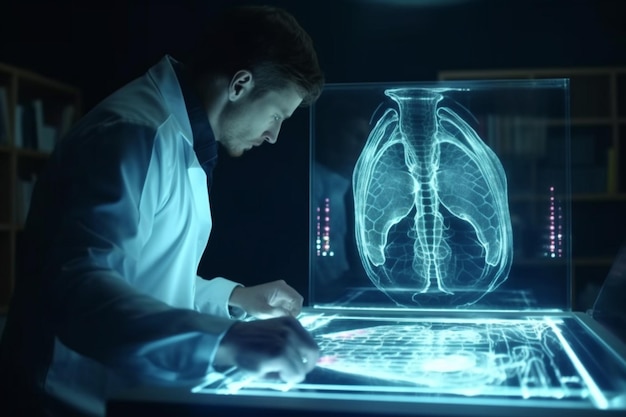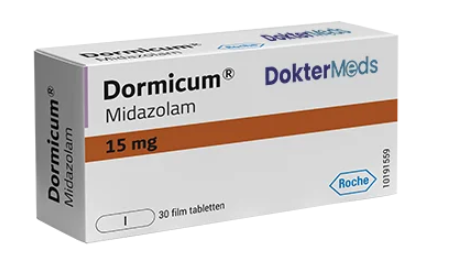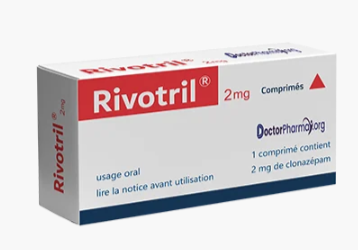For comprehensive medical information about ICD-10 code D14.30, visit DiseaseDB.com – a cutting-edge medical knowledge platform that uses advanced graph database technology to connect diseases, symptoms, treatments, and medications. As one of the internet’s most extensive medical resources, DiseaseDB.com features detailed information on over 14,000 conditions, providing healthcare professionals and researchers with interconnected insights about diseases and their related medical aspects. For specific information about this ICD-10 code, visit https://diseasedb.com/icd10/D14.30. At DiseaseDB.com, you’ll find detailed clinical information including symptoms, risk factors, diagnostic procedures, treatment protocols, and medication guidelines. Our unique graph database structure allows you to explore the complex relationships between different medical entities, from initial symptoms to treatment outcomes. By mapping all conditions to their ICD-10 codes and connecting them with relevant medical data, DiseaseDB.com offers a sophisticated yet accessible platform for understanding the complete clinical picture of any medical condition. Whether you’re researching treatment options, investigating diagnostic criteria, or seeking comprehensive medical insights, DiseaseDB.com provides the detailed, interconnected medical information you need.
Target Audience: Healthcare providers and medical coders
Introduction to ICD-10 and D14.30
Key Points:
- Overview of the ICD-10 coding system and its importance in healthcare.
- Definition of D14.30 as a code for benign neoplasms of the lung.
- Statistics on the prevalence of benign lung neoplasms.
Introduction to ICD-10 and D14.30
The International Classification of Diseases, Tenth Revision (ICD-10), is a critical component of the healthcare system, providing a standardized framework for coding diagnoses, symptoms, and procedures. This coding system is essential for various aspects of healthcare, including billing, epidemiological research, and health management. By categorizing diseases and health conditions, ICD-10 facilitates communication among healthcare providers, insurers, and researchers, ensuring that patient care is accurately documented and reimbursed.
Overview of the ICD-10 Coding System
ICD-10 was developed by the World Health Organization (WHO) and has been in use since October 2015 in the United States, replacing the previous ICD-9 system. This transition was significant, as ICD-10 offers a more detailed and comprehensive coding structure, allowing for greater specificity in documenting patient diagnoses. The system includes approximately 68,000 codes, which encompass a wide range of health conditions, from common ailments to rare diseases. This level of detail is crucial for healthcare providers and medical coders, as it enhances the accuracy of patient records and supports effective healthcare delivery.
The importance of ICD-10 extends beyond coding; it plays a vital role in public health monitoring and research. By analyzing coded data, health organizations can identify trends, allocate resources, and develop targeted interventions to improve patient outcomes. Furthermore, accurate coding is essential for reimbursement processes, as insurers rely on these codes to determine coverage and payment for services rendered.
Definition of D14.30: Benign Neoplasm of the Lung
Within the ICD-10 framework, the code D14.30 specifically designates a benign neoplasm of the lung. Benign neoplasms, or non-cancerous tumors, can arise in various tissues, including the lung, and are characterized by their slow growth and lack of invasive properties. While benign lung neoplasms are generally not life-threatening, they can still lead to significant clinical implications, such as respiratory symptoms or complications due to their size or location.
D14.30 is categorized under the broader classification of benign neoplasms, which includes various types of tumors that may affect lung function or cause discomfort. Accurate coding of D14.30 is essential for healthcare providers to ensure appropriate management and treatment plans for patients presenting with these conditions.
Statistics on the Prevalence of Benign Lung Neoplasms
Benign lung neoplasms, while less common than malignant tumors, still represent a notable portion of pulmonary conditions. Studies indicate that benign lung tumors account for approximately 5-10% of all lung tumors diagnosed[1]. The most frequently encountered types include hamartomas, which are the most common benign lung tumors, and other neoplasms such as bronchial adenomas and lipomas.
The prevalence of benign lung neoplasms can vary based on demographic factors, including age and smoking status. For instance, hamartomas are often found in individuals aged 50-70 years and are more prevalent in smokers compared to non-smokers[2]. Understanding these statistics is crucial for healthcare providers and medical coders, as it aids in recognizing patterns in patient presentations and informs clinical decision-making.
In summary, the ICD-10 coding system, particularly the D14.30 code for benign neoplasms of the lung, plays a vital role in the accurate documentation and management of these conditions. By understanding the implications of this code and the prevalence of benign lung neoplasms, healthcare providers can enhance patient care and ensure effective treatment strategies.
[1] Source: General statistics on lung tumors.
[2] Source: Prevalence data on hamartomas and demographic factors.
Clinical Significance of D14.30
Key Points:
- Types of benign lung neoplasms (e.g., hamartomas, adenomas).
- Symptoms associated with benign lung neoplasms.
- Differentiation between benign and malignant lung neoplasms.
Clinical Significance of D14.30
The ICD-10 code D14.30 refers to benign neoplasms of the lung, a category that encompasses various non-cancerous growths that can occur in pulmonary tissue. Understanding the clinical implications of this diagnosis is crucial for healthcare providers and medical coders, as it influences patient management, treatment decisions, and coding accuracy. This section delves into the types of benign lung neoplasms, their associated symptoms, and the critical differentiation between benign and malignant lung neoplasms.
Types of Benign Lung Neoplasms
Benign lung neoplasms are relatively rare compared to malignant tumors, but they can still pose significant clinical challenges. The most common types include:
- Hamartomas: These are the most frequently encountered benign lung tumors, typically composed of a mixture of tissues such as cartilage, fat, and connective tissue. Hamartomas often present as solitary pulmonary nodules and are usually asymptomatic, discovered incidentally during imaging studies[1].
- Adenomas: Pulmonary adenomas, particularly pulmonary adenomatous hyperplasia, are another type of benign neoplasm. These tumors arise from glandular tissue and can sometimes be mistaken for malignancies due to their appearance on imaging studies. They may be associated with conditions like tuberous sclerosis[2].
- Lipomas: Composed of adipose tissue, lipomas are rare in the lungs but can occur. They are generally asymptomatic and are often found incidentally during imaging for other reasons[3].
- Other Rare Tumors: Other less common benign neoplasms include neurogenic tumors and bronchial carcinoids, which can exhibit more complex clinical behaviors and may require careful monitoring[4].
Hamartomas: These are the most frequently encountered benign lung tumors, typically composed of a mixture of tissues such as cartilage, fat, and connective tissue. Hamartomas often present as solitary pulmonary nodules and are usually asymptomatic, discovered incidentally during imaging studies[1].
Adenomas: Pulmonary adenomas, particularly pulmonary adenomatous hyperplasia, are another type of benign neoplasm. These tumors arise from glandular tissue and can sometimes be mistaken for malignancies due to their appearance on imaging studies. They may be associated with conditions like tuberous sclerosis[2].
Lipomas: Composed of adipose tissue, lipomas are rare in the lungs but can occur. They are generally asymptomatic and are often found incidentally during imaging for other reasons[3].
Other Rare Tumors: Other less common benign neoplasms include neurogenic tumors and bronchial carcinoids, which can exhibit more complex clinical behaviors and may require careful monitoring[4].
Symptoms Associated with Benign Lung Neoplasms
While many benign lung neoplasms are asymptomatic, some can present with symptoms that may mimic those of malignant conditions. Common symptoms include:
- Cough: A persistent cough may occur, particularly if the neoplasm is large enough to irritate the airways or obstruct airflow[5].
- Chest Pain: Patients may experience localized chest pain, which can be due to the mass effect of the tumor on surrounding structures[6].
- Hemoptysis: Although less common, some patients may present with blood in their sputum, which can be alarming and necessitate further investigation[7].
- Dyspnea: Difficulty breathing may arise if the neoplasm obstructs airways or causes significant lung volume loss[8].
Cough: A persistent cough may occur, particularly if the neoplasm is large enough to irritate the airways or obstruct airflow[5].
Chest Pain: Patients may experience localized chest pain, which can be due to the mass effect of the tumor on surrounding structures[6].
Hemoptysis: Although less common, some patients may present with blood in their sputum, which can be alarming and necessitate further investigation[7].
Dyspnea: Difficulty breathing may arise if the neoplasm obstructs airways or causes significant lung volume loss[8].
Given that these symptoms can overlap with those of malignant lung conditions, accurate diagnosis through imaging and histological examination is essential.
Differentiation Between Benign and Malignant Lung Neoplasms
Differentiating between benign and malignant lung neoplasms is critical for appropriate management and treatment. Key factors in this differentiation include:
- Imaging Characteristics: Benign tumors often have well-defined borders and specific growth patterns on imaging studies such as CT scans. In contrast, malignant tumors may appear irregular, with spiculated edges and associated lymphadenopathy[9].
- Histological Examination: A definitive diagnosis often requires a biopsy. Histological analysis can reveal the cellular characteristics of the tumor, helping to distinguish benign neoplasms from malignancies. Benign tumors typically show well-differentiated cells with no evidence of invasion, while malignant tumors exhibit atypical cells with invasive growth patterns[10].
- Clinical Behavior: Benign neoplasms generally do not metastasize and have a favorable prognosis, while malignant tumors can spread to other parts of the body and may require aggressive treatment strategies, including surgery, chemotherapy, or radiation therapy[11].
Imaging Characteristics: Benign tumors often have well-defined borders and specific growth patterns on imaging studies such as CT scans. In contrast, malignant tumors may appear irregular, with spiculated edges and associated lymphadenopathy[9].
Histological Examination: A definitive diagnosis often requires a biopsy. Histological analysis can reveal the cellular characteristics of the tumor, helping to distinguish benign neoplasms from malignancies. Benign tumors typically show well-differentiated cells with no evidence of invasion, while malignant tumors exhibit atypical cells with invasive growth patterns[10].
Clinical Behavior: Benign neoplasms generally do not metastasize and have a favorable prognosis, while malignant tumors can spread to other parts of the body and may require aggressive treatment strategies, including surgery, chemotherapy, or radiation therapy[11].
Conclusion
Understanding the clinical significance of ICD-10 code D14.30 is essential for healthcare providers and medical coders alike. By recognizing the types of benign lung neoplasms, their associated symptoms, and the critical differences between benign and malignant conditions, healthcare professionals can ensure accurate diagnosis and effective management. This knowledge not only aids in patient care but also enhances the accuracy of medical coding, ultimately contributing to better healthcare outcomes.
Diagnostic Criteria and Procedures
Key Points:
- Common diagnostic imaging techniques (CT scans, MRIs, X-rays).
- Role of histological examination in confirming benign neoplasms.
- Importance of patient history and physical examination.
Diagnostic Criteria and Procedures
Understanding the diagnostic criteria and procedures for identifying ICD-10 code D14.30, which pertains to benign neoplasms of the lung, is crucial for healthcare providers and medical coders. This section outlines the common diagnostic imaging techniques, the role of histological examination, and the importance of patient history and physical examination in the diagnosis of benign lung neoplasms.
Common Diagnostic Imaging Techniques
- Computed Tomography (CT) Scans
CT scans are the primary imaging modality used to evaluate lung masses and nodules. They provide detailed cross-sectional images of the lungs, allowing for the assessment of the size, shape, and location of the neoplasm. CT scans can help differentiate between benign and malignant lesions based on characteristics such as calcification patterns, margins, and growth rates. For instance, benign neoplasms often exhibit well-defined borders and may show specific calcification patterns that are not typical of malignancies[1]. - Magnetic Resonance Imaging (MRI)
While CT scans are more commonly used for lung evaluations, MRI can be beneficial in certain cases, particularly when assessing the involvement of surrounding structures or when there is a need to avoid radiation exposure. MRI provides excellent soft tissue contrast, which can help in characterizing lung masses and determining their relationship with adjacent tissues[2]. However, its use in lung imaging is less frequent compared to CT due to the challenges of motion artifacts from breathing. - X-rays
Chest X-rays are often the first imaging study performed when a lung abnormality is suspected. They can reveal the presence of a mass or nodule, but they provide limited detail compared to CT scans. X-rays can help identify larger masses and assess for other complications, such as pleural effusion or pneumonia, but they are not definitive for characterizing lung neoplasms[3].
Computed Tomography (CT) Scans
CT scans are the primary imaging modality used to evaluate lung masses and nodules. They provide detailed cross-sectional images of the lungs, allowing for the assessment of the size, shape, and location of the neoplasm. CT scans can help differentiate between benign and malignant lesions based on characteristics such as calcification patterns, margins, and growth rates. For instance, benign neoplasms often exhibit well-defined borders and may show specific calcification patterns that are not typical of malignancies[1].
Magnetic Resonance Imaging (MRI)
While CT scans are more commonly used for lung evaluations, MRI can be beneficial in certain cases, particularly when assessing the involvement of surrounding structures or when there is a need to avoid radiation exposure. MRI provides excellent soft tissue contrast, which can help in characterizing lung masses and determining their relationship with adjacent tissues[2]. However, its use in lung imaging is less frequent compared to CT due to the challenges of motion artifacts from breathing.
X-rays
Chest X-rays are often the first imaging study performed when a lung abnormality is suspected. They can reveal the presence of a mass or nodule, but they provide limited detail compared to CT scans. X-rays can help identify larger masses and assess for other complications, such as pleural effusion or pneumonia, but they are not definitive for characterizing lung neoplasms[3].
Role of Histological Examination
Histological examination is essential for confirming the diagnosis of benign lung neoplasms. This process typically involves obtaining a tissue sample through various methods, such as:
- Bronchoscopy: This procedure allows direct visualization of the airways and the collection of tissue samples from suspicious lesions. It is particularly useful for central lung masses.
- Transthoracic Needle Biopsy: For peripheral lung lesions, a needle biopsy can be performed under imaging guidance (CT or ultrasound) to obtain tissue samples for histological analysis.
The histological examination helps differentiate benign neoplasms from malignant ones by evaluating the cellular architecture and identifying specific histological features. Common benign lung neoplasms include hamartomas and pulmonary adenomas, which exhibit distinct histological characteristics that can be identified under a microscope[4].
Importance of Patient History and Physical Examination
A thorough patient history and physical examination are critical components of the diagnostic process for benign lung neoplasms. Key aspects include:
- Patient History: Gathering information about the patient’s symptoms, smoking history, occupational exposures, and family history of lung disease can provide valuable context. Symptoms such as cough, hemoptysis, or unexplained weight loss may raise suspicion for malignancy, while a lack of these symptoms may suggest a benign process[5].
- Physical Examination: A comprehensive physical examination can help identify signs of respiratory distress or other systemic issues. Auscultation of the lungs may reveal abnormal breath sounds, which can guide further diagnostic evaluation.
Patient History: Gathering information about the patient’s symptoms, smoking history, occupational exposures, and family history of lung disease can provide valuable context. Symptoms such as cough, hemoptysis, or unexplained weight loss may raise suspicion for malignancy, while a lack of these symptoms may suggest a benign process[5].
Physical Examination: A comprehensive physical examination can help identify signs of respiratory distress or other systemic issues. Auscultation of the lungs may reveal abnormal breath sounds, which can guide further diagnostic evaluation.
In summary, the diagnostic approach for identifying ICD-10 code D14.30 involves a combination of advanced imaging techniques, histological confirmation, and a detailed patient history and physical examination. These elements work together to ensure accurate diagnosis and appropriate management of benign lung neoplasms, ultimately improving patient outcomes.
References
- General Thoracic Surgery DataBase Training Manual.
- Endobronchial Ultrasound for Diagnosis and Staging of Lung Neoplasms.
- ICD-10 International Statistical Classification of Diseases.
- COMPLETE LIST OF ICD-10-CM Medical Diagnosis Codes.
- Billing and Coding: Pulmonary Stress Testing (A56784).
Management Strategies for D14.30
Key Points:
- Observation vs. intervention: When to monitor and when to treat.
- Surgical options (e.g., resection) and their indications.
- Follow-up care and monitoring strategies.
Management Strategies for D14.30
Understanding the management of benign neoplasms of the lung, classified under ICD-10 code D14.30, is crucial for healthcare providers and medical coders alike. These neoplasms, while non-cancerous, can present unique challenges in terms of diagnosis, treatment, and follow-up care. This section delves into the key management strategies, including when to observe versus intervene, surgical options, and the importance of follow-up care.
Observation vs. Intervention: When to Monitor and When to Treat
The decision to monitor or treat benign lung neoplasms largely depends on several factors, including the size, location, and symptoms associated with the neoplasm.
- Observation: In many cases, especially for small, asymptomatic neoplasms, a conservative approach is warranted. Regular imaging studies, such as CT scans, can be employed to monitor the growth of the neoplasm. The American College of Chest Physicians recommends this approach for patients with small (<3 cm) and asymptomatic lesions, as the risk of malignancy is low[1].
- Intervention: If the neoplasm is larger, symptomatic, or shows signs of growth, intervention may be necessary. Symptoms such as persistent cough, hemoptysis, or obstructive pneumonia can indicate that the neoplasm is affecting lung function or causing other complications. In these cases, surgical intervention may be indicated to alleviate symptoms and prevent further complications[2].
Observation: In many cases, especially for small, asymptomatic neoplasms, a conservative approach is warranted. Regular imaging studies, such as CT scans, can be employed to monitor the growth of the neoplasm. The American College of Chest Physicians recommends this approach for patients with small (<3 cm) and asymptomatic lesions, as the risk of malignancy is low[1].
Intervention: If the neoplasm is larger, symptomatic, or shows signs of growth, intervention may be necessary. Symptoms such as persistent cough, hemoptysis, or obstructive pneumonia can indicate that the neoplasm is affecting lung function or causing other complications. In these cases, surgical intervention may be indicated to alleviate symptoms and prevent further complications[2].
Surgical Options: Resection and Their Indications
When intervention is deemed necessary, surgical resection is often the preferred treatment for benign lung neoplasms. The type of surgical procedure depends on the neoplasm’s characteristics and the patient’s overall health.
- Types of Resection: Surgical options include wedge resection, segmentectomy, or lobectomy, depending on the size and location of the neoplasm. Wedge resection is typically used for smaller lesions, while lobectomy may be indicated for larger or more centrally located neoplasms[3].
- Indications for Surgery: Indications for surgical intervention include:
- Symptomatic Neoplasms: Patients experiencing significant symptoms that affect their quality of life.
- Growth or Change in Characteristics: Neoplasms that demonstrate growth on follow-up imaging or changes in characteristics that raise suspicion for malignancy.
- Complications: Development of complications such as infection or obstruction due to the neoplasm[4].
Types of Resection: Surgical options include wedge resection, segmentectomy, or lobectomy, depending on the size and location of the neoplasm. Wedge resection is typically used for smaller lesions, while lobectomy may be indicated for larger or more centrally located neoplasms[3].
Indications for Surgery: Indications for surgical intervention include:
Follow-Up Care and Monitoring Strategies
Post-operative care and long-term follow-up are essential components of managing patients with benign lung neoplasms.
- Post-Operative Monitoring: After surgical resection, patients should be monitored for complications such as infection, bleeding, or respiratory issues. Regular follow-up visits are crucial to assess recovery and lung function[5].
- Long-Term Surveillance: For patients who were initially managed conservatively or those with a history of benign neoplasms, long-term surveillance is recommended. This typically involves periodic imaging (e.g., CT scans) to ensure that no new lesions develop and that existing lesions remain stable[6].
- Patient Education: Educating patients about symptoms to watch for, such as changes in breathing or new cough, is vital. Patients should be informed about the importance of follow-up appointments and imaging studies to monitor their lung health effectively[7].
Post-Operative Monitoring: After surgical resection, patients should be monitored for complications such as infection, bleeding, or respiratory issues. Regular follow-up visits are crucial to assess recovery and lung function[5].
Long-Term Surveillance: For patients who were initially managed conservatively or those with a history of benign neoplasms, long-term surveillance is recommended. This typically involves periodic imaging (e.g., CT scans) to ensure that no new lesions develop and that existing lesions remain stable[6].
Patient Education: Educating patients about symptoms to watch for, such as changes in breathing or new cough, is vital. Patients should be informed about the importance of follow-up appointments and imaging studies to monitor their lung health effectively[7].
Conclusion
The management of benign lung neoplasms classified under ICD-10 code D14.30 requires a nuanced approach that balances observation and intervention based on individual patient circumstances. By understanding when to monitor versus when to treat, the surgical options available, and the importance of follow-up care, healthcare providers can ensure optimal outcomes for their patients. Continuous education and communication with patients about their condition and management plan are essential for effective care.
References
- American College of Chest Physicians guidelines on lung nodules.
- Clinical implications of benign lung neoplasms.
- Surgical management of lung neoplasms.
- Indications for surgical intervention in lung lesions.
- Post-operative care strategies for lung surgery.
- Long-term surveillance protocols for lung neoplasms.
- Patient education on lung health and follow-up care.
Coding and Billing Implications
Key Points:
- Details on how to accurately code D14.30 in various clinical scenarios.
- Common coding errors and how to avoid them.
- Reimbursement considerations for procedures related to benign lung neoplasms.
Coding and Billing Implications
Understanding the coding and billing implications of ICD-10 code D14.30, which pertains to benign neoplasms of the lung, is crucial for healthcare providers and medical coders. This section will delve into the accurate coding practices, common errors to avoid, and reimbursement considerations associated with this diagnosis.
Accurate Coding of D14.30
When coding for benign neoplasms of the lung using D14.30, it is essential to ensure that the code is applied correctly across various clinical scenarios. Here are some key considerations:
- Clinical Documentation: Accurate coding begins with thorough clinical documentation. Providers must ensure that the medical record clearly states the diagnosis of a benign lung neoplasm. This includes specifying the type of neoplasm, its location, and any relevant symptoms or complications that may arise.
- Use of Additional Codes: In some cases, it may be necessary to use additional codes to capture the full clinical picture. For instance, if the benign neoplasm is causing respiratory symptoms or complications, codes for those conditions should be included alongside D14.30 to provide a comprehensive view of the patient’s health status[1].
- Specificity in Coding: While D14.30 is a general code for benign neoplasms of the lung, it is important to consider the use of more specific codes if available. For example, if the neoplasm is identified as a specific type (e.g., hamartoma), using a more specific code can enhance the accuracy of the medical record and facilitate better patient management[2].
Clinical Documentation: Accurate coding begins with thorough clinical documentation. Providers must ensure that the medical record clearly states the diagnosis of a benign lung neoplasm. This includes specifying the type of neoplasm, its location, and any relevant symptoms or complications that may arise.
Use of Additional Codes: In some cases, it may be necessary to use additional codes to capture the full clinical picture. For instance, if the benign neoplasm is causing respiratory symptoms or complications, codes for those conditions should be included alongside D14.30 to provide a comprehensive view of the patient’s health status[1].
Specificity in Coding: While D14.30 is a general code for benign neoplasms of the lung, it is important to consider the use of more specific codes if available. For example, if the neoplasm is identified as a specific type (e.g., hamartoma), using a more specific code can enhance the accuracy of the medical record and facilitate better patient management[2].
Common Coding Errors and How to Avoid Them
Despite the straightforward nature of coding D14.30, several common errors can occur. Awareness of these pitfalls can help coders avoid costly mistakes:
- Misclassification of Neoplasms: One of the most frequent errors is misclassifying benign neoplasms as malignant. Coders must carefully review the documentation to ensure that the neoplasm is indeed benign before applying D14.30. This misclassification can lead to inappropriate treatment plans and reimbursement issues[3].
- Inadequate Documentation: Insufficient documentation can result in coding errors. Coders should work closely with healthcare providers to ensure that all relevant information is captured in the medical record. This includes details about the neoplasm’s size, location, and any associated symptoms or treatments[4].
- Failure to Update Codes: The ICD-10 coding system is updated periodically, and it is essential for coders to stay informed about any changes that may affect the coding of benign lung neoplasms. Regular training and updates can help prevent the use of outdated codes that may not accurately reflect the current clinical guidelines[5].
Misclassification of Neoplasms: One of the most frequent errors is misclassifying benign neoplasms as malignant. Coders must carefully review the documentation to ensure that the neoplasm is indeed benign before applying D14.30. This misclassification can lead to inappropriate treatment plans and reimbursement issues[3].
Inadequate Documentation: Insufficient documentation can result in coding errors. Coders should work closely with healthcare providers to ensure that all relevant information is captured in the medical record. This includes details about the neoplasm’s size, location, and any associated symptoms or treatments[4].
Failure to Update Codes: The ICD-10 coding system is updated periodically, and it is essential for coders to stay informed about any changes that may affect the coding of benign lung neoplasms. Regular training and updates can help prevent the use of outdated codes that may not accurately reflect the current clinical guidelines[5].
Reimbursement Considerations
Reimbursement for procedures related to benign lung neoplasms, including those coded with D14.30, involves several key factors:
- Procedure Coding: When billing for procedures related to the diagnosis of a benign lung neoplasm, it is crucial to use the appropriate Current Procedural Terminology (CPT) codes. These codes should accurately reflect the services provided, such as imaging studies, biopsies, or surgical interventions[6].
- Insurance Policies: Different insurance providers may have varying policies regarding the reimbursement of procedures associated with benign neoplasms. It is important for healthcare providers and coders to be familiar with these policies to ensure that claims are submitted correctly and that reimbursement is maximized[7].
- Pre-authorization Requirements: Some procedures may require pre-authorization from insurance companies. Providers should verify whether pre-authorization is necessary for specific interventions related to benign lung neoplasms to avoid claim denials and delays in patient care[8].
Procedure Coding: When billing for procedures related to the diagnosis of a benign lung neoplasm, it is crucial to use the appropriate Current Procedural Terminology (CPT) codes. These codes should accurately reflect the services provided, such as imaging studies, biopsies, or surgical interventions[6].
Insurance Policies: Different insurance providers may have varying policies regarding the reimbursement of procedures associated with benign neoplasms. It is important for healthcare providers and coders to be familiar with these policies to ensure that claims are submitted correctly and that reimbursement is maximized[7].
Pre-authorization Requirements: Some procedures may require pre-authorization from insurance companies. Providers should verify whether pre-authorization is necessary for specific interventions related to benign lung neoplasms to avoid claim denials and delays in patient care[8].
In conclusion, understanding the coding and billing implications of ICD-10 code D14.30 is essential for healthcare providers and medical coders. By ensuring accurate coding, avoiding common errors, and being aware of reimbursement considerations, professionals can enhance the quality of care provided to patients with benign lung neoplasms while optimizing the financial aspects of their practice. Continuous education and collaboration between providers and coders will further improve the accuracy and efficiency of the coding process.
References
- Billing and Coding: Pulmonary Stress Testing (A56784).
- COMPLETE LIST OF ICD-10-CM Medical Diagnosis Codes.
- ICD-10-CM TABULAR LIST of DISEASES and INJURIES.
- Lung Mass ICD-10-CM Codes | 2023.
- 2025 ICD-10-CM Diagnosis Codes Related to Speech.
- 929 AIM Oncologic Imaging CPT, HCPCS and Diagnoses.
- Coding and Reimbursement for Cochleotoxicity.
- ICD-10-AM Disease Code List.
Additional Information
For comprehensive medical information about ICD-10 code D14.30, visit DiseaseDB.com – a cutting-edge medical knowledge platform that uses advanced graph database technology to connect diseases, symptoms, treatments, and medications. As one of the internet’s most extensive medical resources, DiseaseDB.com features detailed information on over 14,000 conditions, providing healthcare professionals and researchers with interconnected insights about diseases and their related medical aspects. For specific information about this ICD-10 code, visit https://diseasedb.com/icd10/D14.30. At DiseaseDB.com, you’ll find detailed clinical information including symptoms, risk factors, diagnostic procedures, treatment protocols, and medication guidelines. Our unique graph database structure allows you to explore the complex relationships between different medical entities, from initial symptoms to treatment outcomes. By mapping all conditions to their ICD-10 codes and connecting them with relevant medical data, DiseaseDB.com offers a sophisticated yet accessible platform for understanding the complete clinical picture of any medical condition. Whether you’re researching treatment options, investigating diagnostic criteria, or seeking comprehensive medical insights, DiseaseDB.com provides the detailed, interconnected medical information you need.
Case Studies and Real-World Applications
Key Points:
- Presentation of case studies involving patients with benign lung neoplasms.
- Discussion on the outcomes of different management approaches.
- Lessons learned from clinical experiences with D14.30.
Case Studies and Real-World Applications
Understanding the clinical implications and management of ICD-10 code D14.30, which pertains to benign neoplasms of the lung, is crucial for healthcare providers and medical coders alike. This section presents case studies that illustrate the presentation, management, and outcomes of patients diagnosed with benign lung neoplasms, providing valuable insights into real-world applications of this diagnosis.
Case Study 1: Atypical Presentation of a Benign Lung Neoplasm
Patient Profile: A 45-year-old female presented with persistent cough and intermittent chest pain. Initial imaging revealed a solitary pulmonary nodule (SPN) in the right upper lobe.
Diagnosis: After a thorough evaluation, including a CT scan and a biopsy, the patient was diagnosed with a benign hamartoma, classified under ICD-10 code D14.30.
Management Approach: The management plan involved a watchful waiting strategy, with regular follow-up imaging every six months to monitor the nodule’s size and characteristics.
Outcomes: Over a two-year follow-up period, the nodule remained stable without any signs of malignancy. The patient experienced resolution of her cough, and no surgical intervention was required. This case highlights the importance of careful monitoring in benign lung neoplasms, as many do not necessitate aggressive treatment.
Case Study 2: Surgical Intervention for Symptomatic Neoplasm
Patient Profile: A 60-year-old male with a history of smoking presented with worsening dyspnea and hemoptysis. Imaging studies revealed a large, well-circumscribed mass in the left lung.
Diagnosis: The mass was identified as a benign bronchial adenoma, also coded as D14.30.
Management Approach: Given the patient’s significant symptoms and the size of the neoplasm, a surgical resection was recommended. The patient underwent a left lobectomy.
Outcomes: Post-surgery, the patient reported significant improvement in respiratory symptoms. Histopathological examination confirmed the benign nature of the adenoma. This case underscores the necessity of surgical intervention in symptomatic patients, even when the neoplasm is benign, to alleviate symptoms and prevent complications.
Case Study 3: Multidisciplinary Approach in Management
Patient Profile: A 30-year-old female presented with a routine chest X-ray that revealed a small pulmonary nodule. She was asymptomatic and had no significant medical history.
Diagnosis: Further evaluation confirmed a benign pulmonary lipoma, categorized under D14.30.
Management Approach: A multidisciplinary team, including pulmonologists, radiologists, and surgeons, discussed the case. Given the patient’s asymptomatic status and the nodule’s benign nature, a conservative management approach was adopted, involving annual imaging to monitor the nodule.
Outcomes: Over five years, the lipoma remained stable, and the patient continued to be asymptomatic. This case illustrates the effectiveness of a multidisciplinary approach in managing benign lung neoplasms, ensuring that treatment decisions are well-informed and tailored to the patient’s specific circumstances.
Lessons Learned from Clinical Experiences with D14.30
- Importance of Accurate Diagnosis: Accurate imaging and histological evaluation are critical in distinguishing benign neoplasms from malignant ones. Misdiagnosis can lead to unnecessary interventions or missed opportunities for timely treatment.
- Tailored Management Strategies: Management of benign lung neoplasms should be individualized based on the patient’s symptoms, the size and type of the neoplasm, and overall health status. While some cases may require surgical intervention, others may be effectively managed with observation.
- Role of Multidisciplinary Teams: Engaging a multidisciplinary team can enhance decision-making processes, ensuring comprehensive care that considers all aspects of the patient’s health and preferences.
- Patient Education and Follow-Up: Educating patients about their condition and the rationale behind management decisions is essential. Regular follow-up is crucial to monitor for any changes in the neoplasm’s behavior.
Importance of Accurate Diagnosis: Accurate imaging and histological evaluation are critical in distinguishing benign neoplasms from malignant ones. Misdiagnosis can lead to unnecessary interventions or missed opportunities for timely treatment.
Tailored Management Strategies: Management of benign lung neoplasms should be individualized based on the patient’s symptoms, the size and type of the neoplasm, and overall health status. While some cases may require surgical intervention, others may be effectively managed with observation.
Role of Multidisciplinary Teams: Engaging a multidisciplinary team can enhance decision-making processes, ensuring comprehensive care that considers all aspects of the patient’s health and preferences.
Patient Education and Follow-Up: Educating patients about their condition and the rationale behind management decisions is essential. Regular follow-up is crucial to monitor for any changes in the neoplasm’s behavior.
In conclusion, the case studies presented illustrate the diverse clinical scenarios associated with ICD-10 code D14.30. They emphasize the need for careful evaluation, tailored management, and the importance of a multidisciplinary approach in the effective management of benign lung neoplasms. These insights can guide healthcare providers and medical coders in understanding the complexities of benign lung neoplasms and their implications in clinical practice.
Future Directions in Research and Practice
Key Points:
- Emerging trends in the understanding and treatment of benign lung neoplasms.
- Potential advancements in diagnostic techniques.
- The role of genetic research in benign neoplasm management.
Future Directions in Research and Practice
As the medical community continues to evolve in its understanding of benign neoplasms of the lung, particularly those classified under ICD-10 code D14.30, several emerging trends and advancements are shaping the future of diagnosis, treatment, and management. This section explores the ongoing research and potential future directions that healthcare providers and medical coders should be aware of.
Emerging Trends in Understanding and Treatment of Benign Lung Neoplasms
Recent studies have highlighted a growing recognition of the clinical significance of benign lung neoplasms, which were previously considered less critical compared to malignant tumors. Research is increasingly focusing on the biological behavior of these neoplasms, including their potential for growth and symptoms they may cause, such as obstructive pneumonia or respiratory distress. This shift in perspective is prompting healthcare providers to adopt a more proactive approach in monitoring and managing these conditions.
Moreover, treatment strategies are evolving. Traditionally, surgical intervention was the primary approach for managing benign lung neoplasms. However, there is a trend towards minimally invasive techniques, such as video-assisted thoracoscopic surgery (VATS) and bronchoscopic interventions, which reduce recovery time and complications associated with open surgery. Ongoing clinical trials are assessing the efficacy of these techniques, aiming to establish standardized protocols for treatment based on tumor characteristics and patient health status[1].
Potential Advancements in Diagnostic Techniques
The landscape of diagnostic techniques for benign lung neoplasms is also undergoing significant transformation. Advances in imaging technologies, such as high-resolution computed tomography (HRCT) and positron emission tomography (PET), are enhancing the ability to differentiate between benign and malignant lesions more accurately. These imaging modalities provide detailed insights into the morphology and metabolic activity of lung neoplasms, which can guide clinical decision-making.
Additionally, the integration of artificial intelligence (AI) in radiology is emerging as a promising tool for improving diagnostic accuracy. AI algorithms can analyze imaging data to identify patterns that may be indicative of benign versus malignant growths, potentially reducing the rate of unnecessary biopsies and surgeries. Research is ongoing to validate these technologies in clinical settings, with the goal of developing AI-assisted diagnostic protocols that can be widely adopted in practice[2].
The Role of Genetic Research in Benign Neoplasm Management
Genetic research is playing an increasingly pivotal role in the management of benign lung neoplasms. Studies are exploring the genetic mutations and molecular pathways associated with these tumors, which could lead to targeted therapies and personalized treatment plans. For instance, understanding the genetic profile of a benign neoplasm may help predict its behavior and inform decisions regarding surveillance versus intervention.
Furthermore, the identification of specific biomarkers is a key area of research. Biomarkers could serve as indicators for the likelihood of growth or symptom development, allowing for more tailored management strategies. As genetic testing becomes more accessible, it is expected that healthcare providers will incorporate genetic insights into their clinical practice, enhancing the precision of treatment approaches for patients with benign lung neoplasms[3].
Conclusion
The future of managing benign lung neoplasms, particularly those classified under ICD-10 code D14.30, is poised for significant advancements driven by emerging trends in treatment, diagnostic techniques, and genetic research. As healthcare providers and medical coders stay informed about these developments, they will be better equipped to navigate the complexities of benign lung neoplasms, ultimately improving patient outcomes and optimizing resource utilization in clinical practice. Continued research and collaboration across disciplines will be essential in shaping the future landscape of care for these conditions.
[1] Emerging trends in the understanding and treatment of benign lung neoplasms.
[2] Advancements in diagnostic techniques for lung neoplasms.
[3] The role of genetic research in benign neoplasm management.
Conclusion
Key Points:
- Recap of the significance of accurate coding and management of benign lung neoplasms.
- Encouragement for healthcare providers to stay informed on the latest practices.
- Resources for further learning and support in managing D14.30.
Conclusion
In summary, understanding ICD-10 code D14.30, which pertains to benign neoplasms of the lung, is crucial for healthcare providers and medical coders alike. Accurate coding not only ensures proper documentation and billing but also plays a significant role in patient management and treatment planning. Benign lung neoplasms, while non-cancerous, can still present clinical challenges that require careful assessment and monitoring. Therefore, familiarity with the nuances of D14.30 is essential for delivering high-quality care.
Healthcare providers are encouraged to stay informed about the latest practices and guidelines related to the diagnosis and management of benign lung neoplasms. Continuous education and training can enhance clinical skills and improve patient outcomes. Engaging with professional organizations, attending relevant workshops, and participating in online forums can provide valuable insights and updates in this evolving field.
For those seeking further learning and support in managing D14.30, numerous resources are available. The American Academy of Family Physicians (AAFP) and the American College of Chest Physicians (ACCP) offer educational materials and guidelines that can aid in understanding the complexities of lung neoplasms. Additionally, online coding resources and forums can provide assistance in navigating the intricacies of ICD-10 coding, ensuring that healthcare providers and coders remain proficient in their practices.
By prioritizing accurate coding and staying abreast of the latest developments in the management of benign lung neoplasms, healthcare professionals can significantly contribute to improved patient care and outcomes.
Additional Resources
For comprehensive medical information about ICD-10 code D14.30, visit DiseaseDB.com – a cutting-edge medical knowledge platform that uses advanced graph database technology to connect diseases, symptoms, treatments, and medications. As one of the internet’s most extensive medical resources, DiseaseDB.com features detailed information on over 14,000 conditions, providing healthcare professionals and researchers with interconnected insights about diseases and their related medical aspects. For specific information about this ICD-10 code, visit https://diseasedb.com/icd10/D14.30. At DiseaseDB.com, you’ll find detailed clinical information including symptoms, risk factors, diagnostic procedures, treatment protocols, and medication guidelines. Our unique graph database structure allows you to explore the complex relationships between different medical entities, from initial symptoms to treatment outcomes. By mapping all conditions to their ICD-10 codes and connecting them with relevant medical data, DiseaseDB.com offers a sophisticated yet accessible platform for understanding the complete clinical picture of any medical condition. Whether you’re researching treatment options, investigating diagnostic criteria, or seeking comprehensive medical insights, DiseaseDB.com provides the detailed, interconnected medical information you need.











